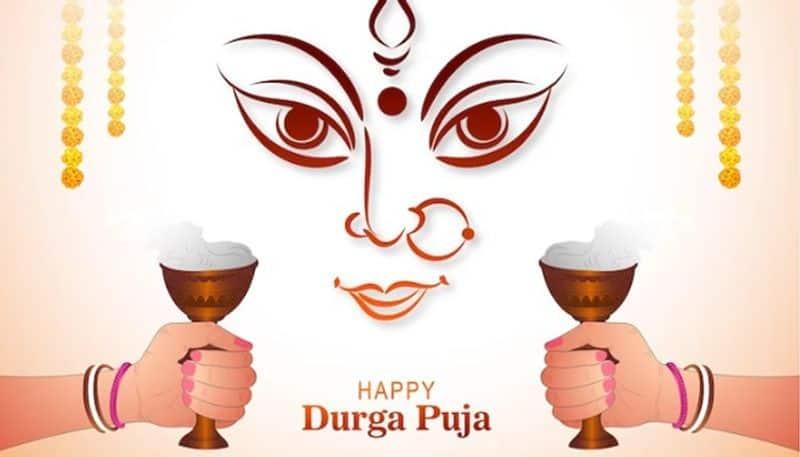
Durga Puja 2023: Maha Saptami Puja, Rituals And Bodhon
Significance of Maha Saptami: Maha Saptami holds immense importance in the Durga Puja celebrations as it is believed to be the day when Goddess Durga begins her journey from the heavens to Earth. According to Hindu mythology, the divine mother, accompanied by her four children - Lakshmi, Saraswati, Kartikeya, and Ganesha, descends to the mortal realm to vanquish the demon Mahishasura. Devotees eagerly await this day, as it signifies the arrival of the goddess and the triumph of good over evil. The day is marked by elaborate rituals, including Bodhon, which plays a crucial role in invoking the goddess's presence.
Pooja Rituals on Maha Saptami: The day starts with a holy bath for the idols of Goddess Durga, symbolizing her purification before descending to Earth. The rituals begin with Mahasnan, a ceremonial bath for the idols, where water from sacred rivers is used. After the bath, the idols are dressed in new attire and adorned with intricate jewelry.
One of the most significant rituals on Maha Saptami is Bodhon, which is the formal invocation of Goddess Durga. This ceremony is performed in the evening. The priest recites mantras and performs aarti (lighting of lamps) to welcome the goddess. A clay pot known as 'Kola Bou' is bathed, symbolizing the welcome of the goddess. The consecration of the goddess involves the pouring of holy water from the Ganges over the idol, which is considered a sacred act of purification.
Another integral part of Maha Saptami is the 'Nabapatrika Snan,' a ritual involving a sacred banana plant that represents the goddess's power. Devotees offer prayers and bathe the Nabapatrika in a holy river, symbolizing the worship of the feminine power.
Bodhon of Goddess Durga: Bodhon, as mentioned earlier, is the formal invocation of Goddess Durga. This ritual marks the beginning of the festivities and is performed with utmost devotion and reverence. The priest, often accompanied by a group of devotees, chants hymns and mantras to invoke the goddess's presence. The atmosphere is charged with spirituality and excitement as the devotees believe that the goddess has arrived among them.
The Bodhon ritual typically involves the lighting of lamps, the waving of incense, and the offering of flowers and fruits to the goddess. The priest performs an aarti, moving a lit lamp in a circular motion in front of the idol, while the devotees sing hymns and offer their prayers.
Maha Saptami is a day of great significance in the Durga Puja festival, signifying the beginning of the goddess's earthly sojourn. The rituals, including Bodhon, are performed with deep devotion and belief, and they serve as a powerful reminder of the victory of good over evil. The festival brings people together in celebration, and the spirit of unity, devotion, and festivity is palpable on this auspicious day.
Legal Disclaimer:
MENAFN provides the
information “as is” without warranty of any kind. We do not accept
any responsibility or liability for the accuracy, content, images,
videos, licenses, completeness, legality, or reliability of the information
contained in this article. If you have any complaints or copyright
issues related to this article, kindly contact the provider above.


















Comments
No comment